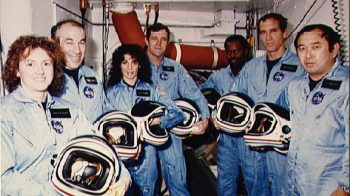The last shuttle for innovation
JEREMY HOBSON: In a matter of hours — assuming the weather cooperates — Americans will get one last look a space shuttle launch. NASA’s 30 year shuttle program is coming to an end with the launch of Atlantis. And the program’s conclusion has launched another debate about America’s role as a high-tech and innovation leader and the long-term viability of the knowledge economy.
From the Marketplace Sustainability Desk, Scott Tong reports.
SCOTT TONG: Atlantis will haul three men, one woman, 30 mice. Amgen is testing a bone loss therapy — on rodents free of earthly possessions, like gravity. It may yield a medicine someday, and it turns out the shuttle program has spawned many innovations: artificial heart pumps, better insulation, a golf ball with distance.
Dan Lockney works for NASA’s chief technologist.
DAN LOCKNEY: We’ve been out-innovating, you know, got to the moon first. We’ve been out-building, we’ve got some of greatest supercomputers and largest wind tunnels. Take a look at the space station, we’re ready to take up that call.
It’s a long list of breakthroughs. Still…
HOWARD MCCURDY: I think the list would be longer if the shuttle was able to fly more frequently.
Howard McCurdy at American University says the shuttle was meant to fly often, like the old airline shuttles — just clean the ashtrays and go up again. But the spacecraft proved too fragile, denting the visions of the 1980s, like:
MCCURDY: Oh, we’re going to have these big large solar arrays in orbit. And we’re going to have these huge platforms that will monitor the earth. Those technological innovations were lost as a result of the infrequencies of flights.
Future space travel may open to NASA competitors like China and private companies. Makes sense, says Josh Lerner at Harvard Business School.
JOSH LERNER: Think about the Internet and biotechnology, where the only venture capitalist in town was the federal government. And over time we saw the private sector pick up the activity.
Many say the key is the “picking up” — that NASA’s big shuttle bet is followed up. By private and public investments in high-risk, shoot-the-moon science and technology.
In Washington I’m Scott Tong for Marketplace.
There’s a lot happening in the world. Through it all, Marketplace is here for you.
You rely on Marketplace to break down the world’s events and tell you how it affects you in a fact-based, approachable way. We rely on your financial support to keep making that possible.
Your donation today powers the independent journalism that you rely on. For just $5/month, you can help sustain Marketplace so we can keep reporting on the things that matter to you.


















